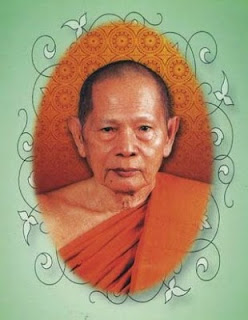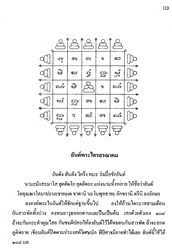The Thais often feel that a particular amulet seeks out its rightful caretaker and "speaks" to a person who is acquiring it. So I set off in the same interest as my tattoo to learn more about the Thai culture and see if my amulet could "find me"... Through several conversations at work I was pointed in the direction of one of my employees by the name of Khun Artit. After several conversations I quickly learned that K. Artit was an avid collector and also believer. He volunteer to help me in my quest to find a proper amulet. Days following he came to work with several amulets that he had selected for me to choose from. I immediately gravitated towards one in particular that had many of the ancient Thai geometrical shapes that I became familiar with in my Sak Yant tattoo explorations. This was the amulet for me and K. Artit explained the meaning behind it's origins and the blessings it had received.
My amulet was issued at Charunrat Temple in Chonburi, Thailand on December 19th, 2013. The objective of issuing the amulet was for it's spiritual powers and also to expand the Temple.
On one side of the amulet is Thao Vessuwan which is the name of the Chief of the Four Heavenly Kings and an important figure in Buddhism. In Thailand they believe that Thao Vessuwan always protects people who try and attack Buddha. He is believed to be very powerful. He also has many spiritual properties by helping to protect, bring honor, wealth, fame and power. The temple invited three famous monks to chant over the amulet and bring its magical powers.
1. Luang Phor Chan (LP Chan) - Wat Bangbo - He is 100 years old and is famous for his spiritual powers in amulets.
 2. Luang Py Fu (LP Foo) - Wat Bangsamak - He is one of the famous guru monks in Thailand. He is 81 years old.
2. Luang Py Fu (LP Foo) - Wat Bangsamak - He is one of the famous guru monks in Thailand. He is 81 years old.3. Luang Pu Hok (LP Hok) - Wat RatRueang Sak
LP Foo
LP Chan
LP Hok
On the Amulet they are various spiritual geometrical shapes with ancient meaning.....
Below Brings Protection
Below Brings Protection as well
Below Brings Charm, Success, Protection and Power
Below Brings Charm and Success
Here is the finished amulet in a protective case that I now need to find a necklace for... Another great experience in Thai culture.

















































